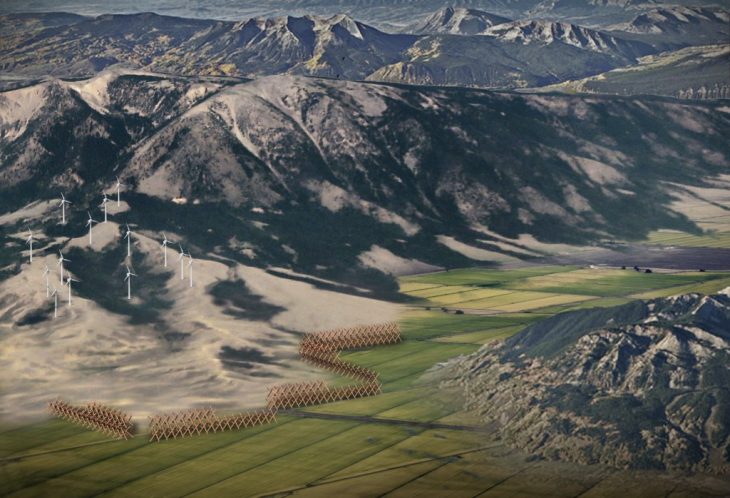Studio: Climatic Matter
Tutors: Jordi Pages, Lluis Viu
Student: Margarita Moshonkina
Problem.
Wind erosion is a serious environmental problem. High velocity winds strike the bare lands (having no cover), with increasing force. Fine, loose and light soil particles blown from the land surface are taken miles and miles away and thereby, causing a great damage to the crop productivity.
Wind erosion consequents:
- Wind erosion damages land and natural vegetation by removing soil from one place and depositing it at another location.
- Wind erosion is very selective, carrying the finest particles – particularly organic matter, clay and loam – many kilometres.
- Sheets of sand travelling close to the ground (30 to 50 metres) can degrade crops
- Lastly, wind erosion reduces the capacity of the soil to store nutrients and water, thus making the environment drier.
Europe and North America, where highly productive farming has developed, suffer a lot because of the wind erosion.
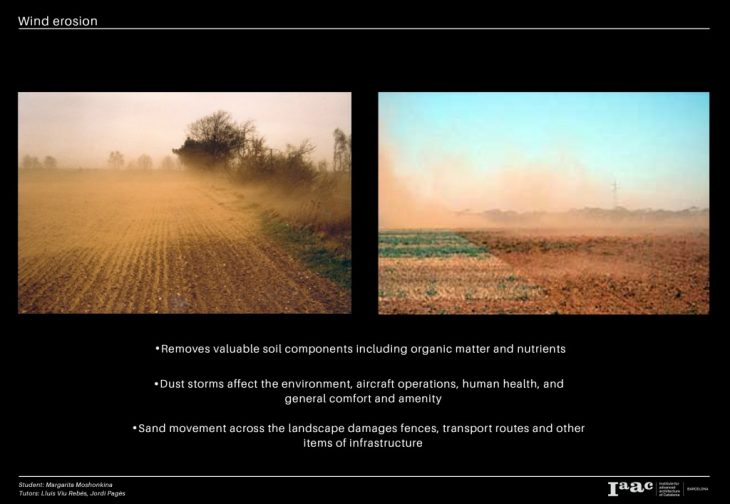
According to EUROPEAN SOIL DATA CENTRE (ESDAC) since 1986 wind erosion has been increasing progressively and as a result to 2017 it has increased by 75 percent.
Currently nearly 66% of the world population is malnourished the largest number of malnourished people ever With the world population now over seven billion and expected to reach 9.3 billion by 2050, more food will be needed. Consider at present that more than 99.7% of human food (calories) comes from the land.
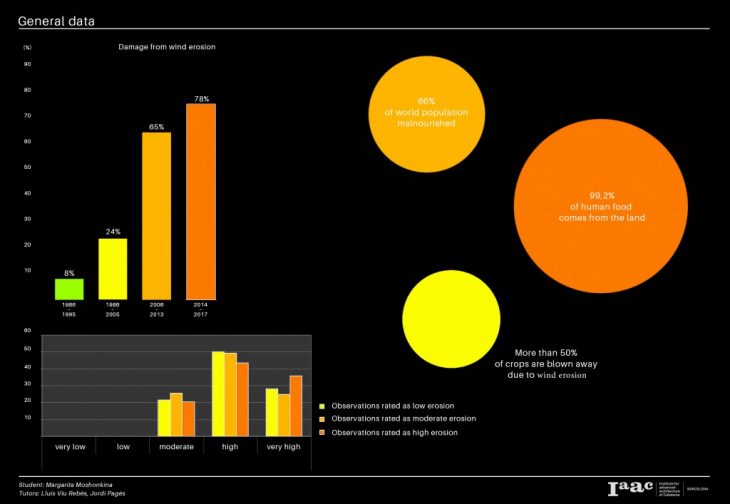
There was very important to understand how wind behaves according to different landscape as well as how saltation is happening.
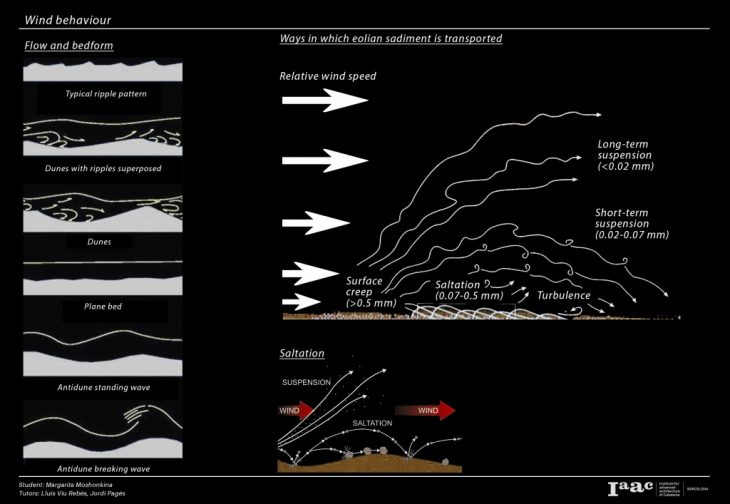
Question:
How can we reduce the effect of the wind erosion?
Proposal:
Tensegrity structure as an alturnative solution for windbreak structure.
It has been known since the middle of the 20th century that continua cannot explain the strength of materials. The geometry of material layout is critical to strength at all scales, from nanoscale biological systems to megascale civil structures. Traditionally, humans have conceived and built structures in rectilinear fashion. Civil structures tend to be made with orthogonal beams, plates, and columns. Orthogonal members are also used in aircraft wings with longerons and spars. However, evidence suggests that this “orthogonal” architecture does not usually yield the minimal mass design for a given set of stiffness properties. Tensegrity structures use longitudinal members arranged in very unusual (and nonorthogonal) patterns to achieve strength with small mass. Another way in which tensegrity systems become mass efficient is with self-similar constructions replacing one tensegrity member by yet another tensegrity structure.
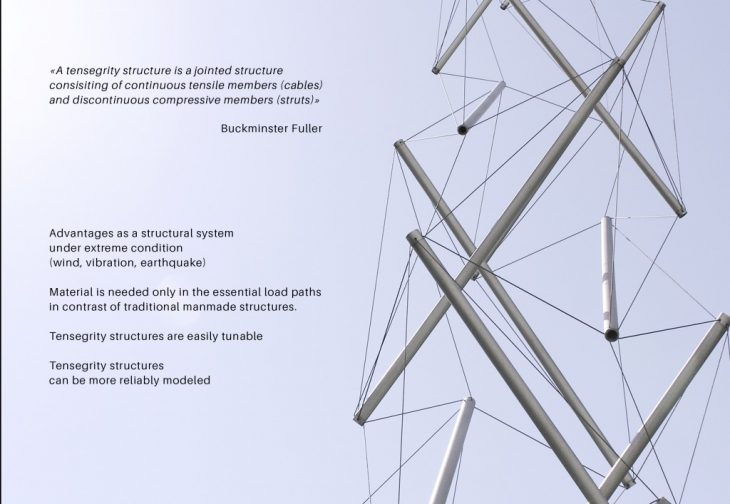
Furthermore Each element of a tensegrity can be built out of smaller tensegrities – making for the most efficient use of materials, an evolutionary imperative. This efficiency is also a very important property, as the rule of biological evolution is efficiency – getting the most performance from the least material.
The first step was to do physical models to understand the nature of tensegrity because it is only one way to understand this type of structure properly.
The second step was to study basic forms, joineries and later on to analyze the structure.
Onwards there were tests of flexibility and plasticity.
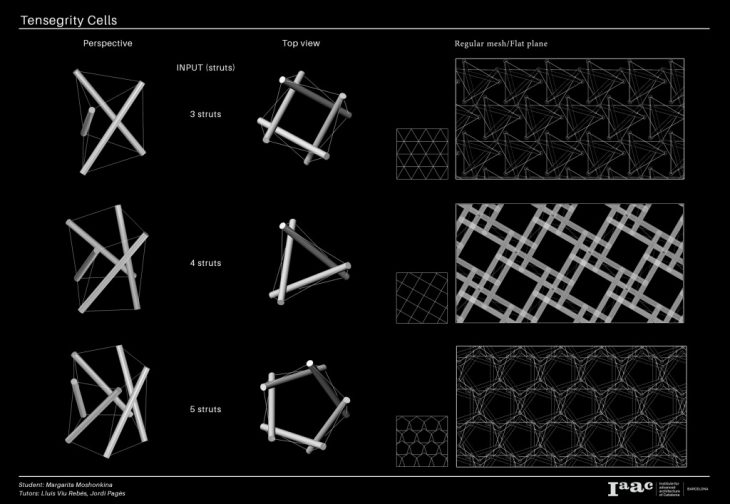
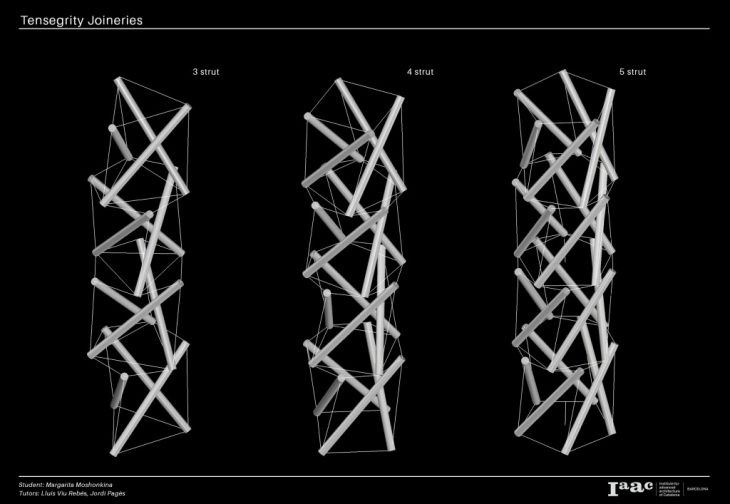
CFD analysis.
After structural study the next step was CFD analysis. There were several parameters which were applied on each analysis.
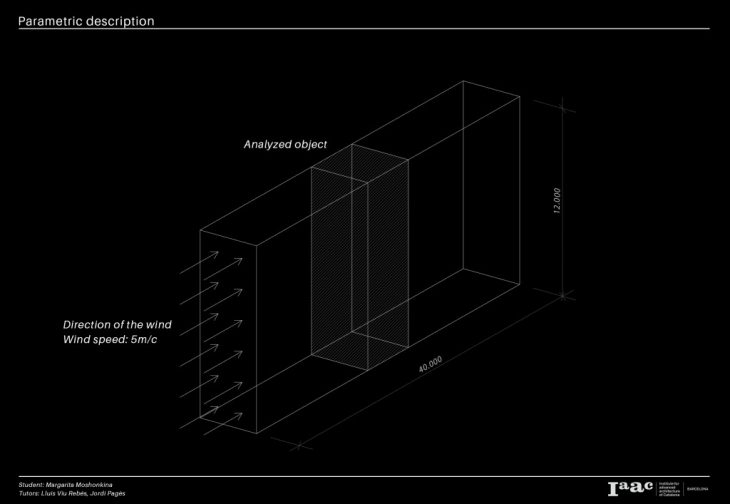

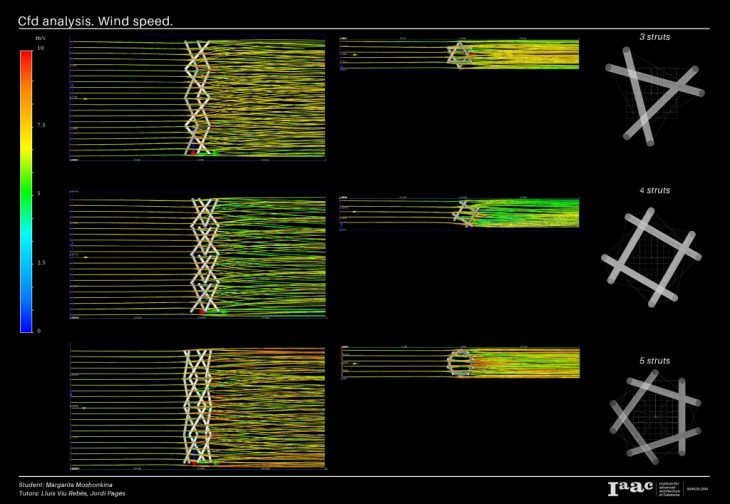
According to the analyses there was chosen the most optimal result: 4 strut cell.
Site.
Minnesota, USA.
This area was chosen because it has high productive farms and futhermore the territory is struggling because of the wind erosion.
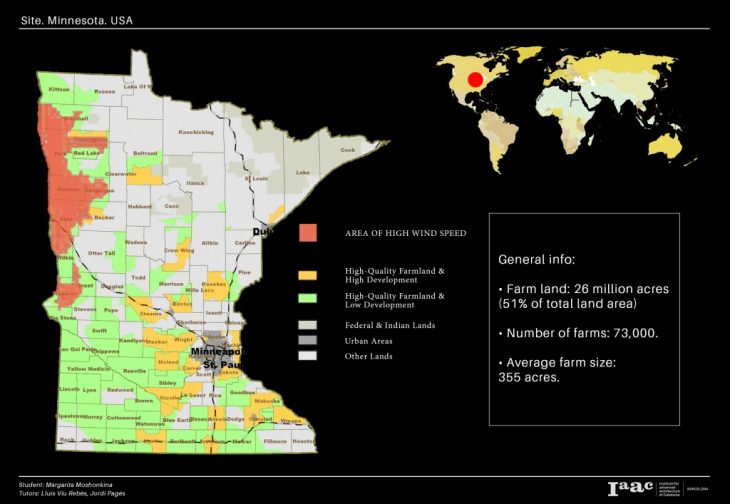
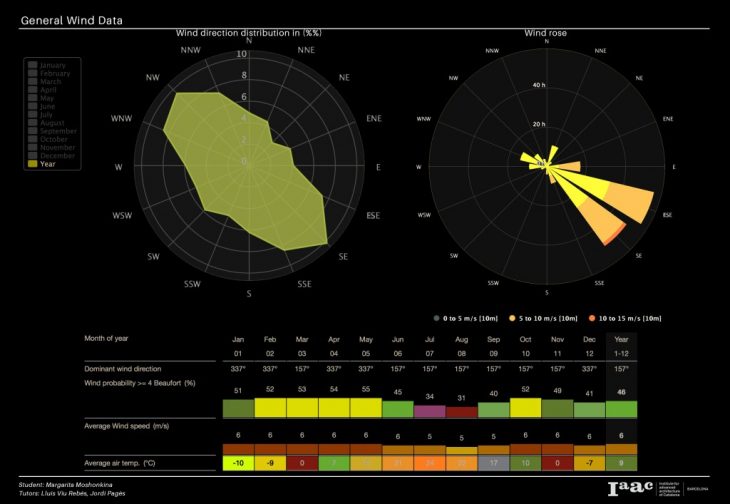
The specific site was chosen and analyzed with CFD software.
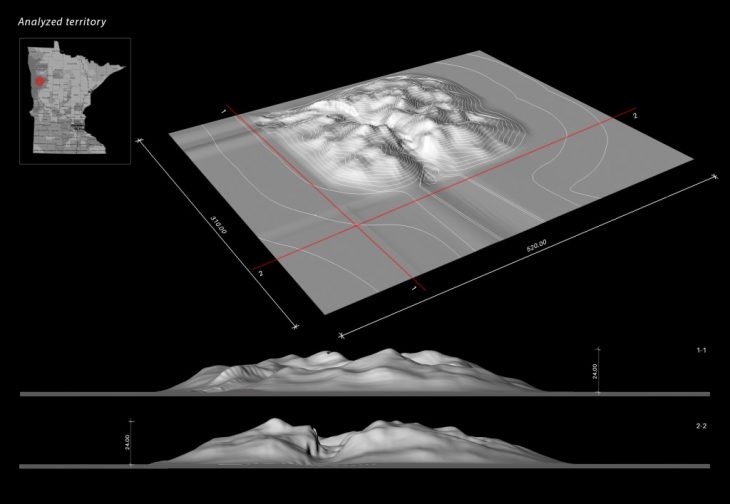
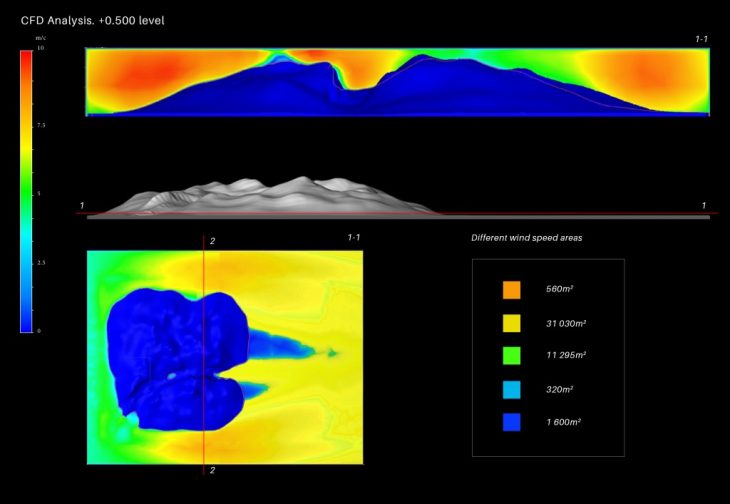
Windbreak Tensegrity Structure.
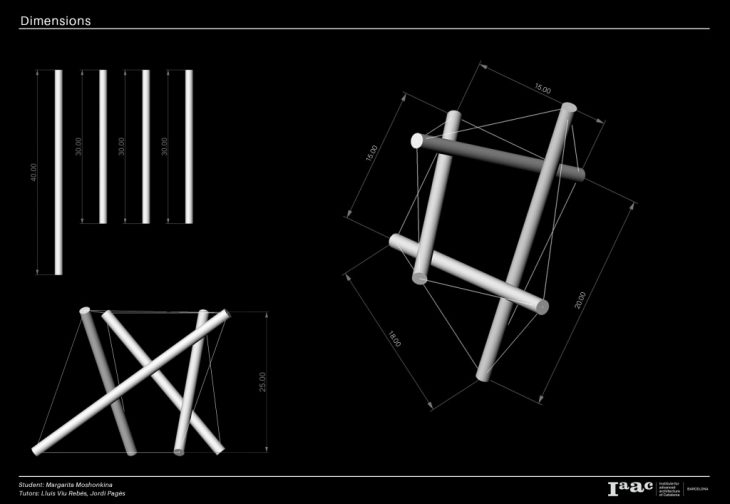
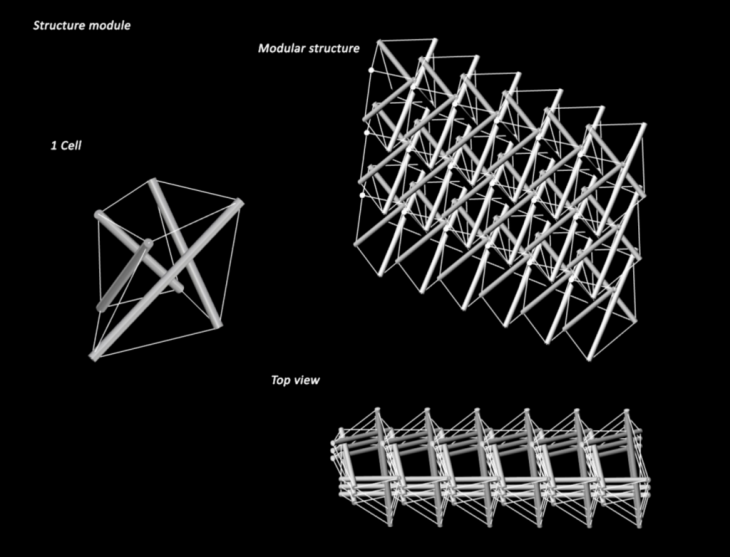
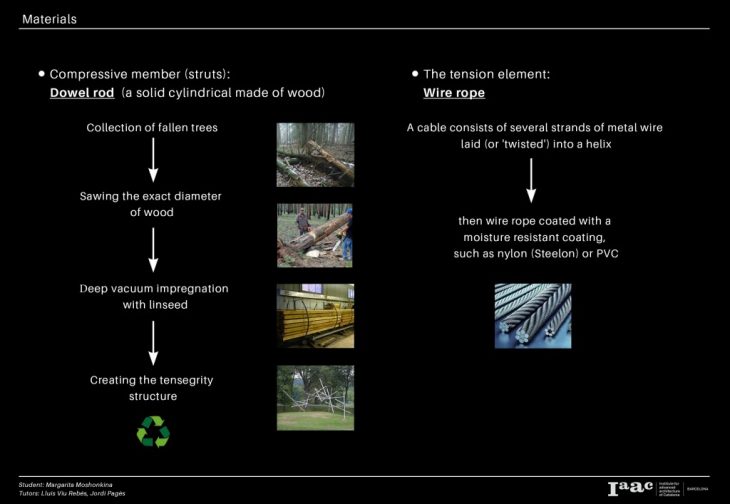
What does the structure give us?
- unlimited design flexibility
- ability to enclose large expanses of space
- lightweight structure
- perform will extreme environment and fluctuating weather cinditions
- the structure assembled from stable units will be more robust with respect to failure in structural elements than a structure built from unstable units
- recycling material
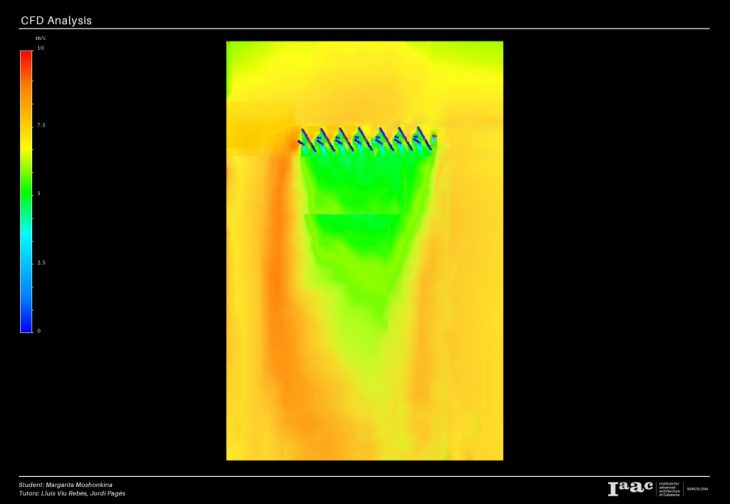
The structure was applied to the site with different patterns and layers.
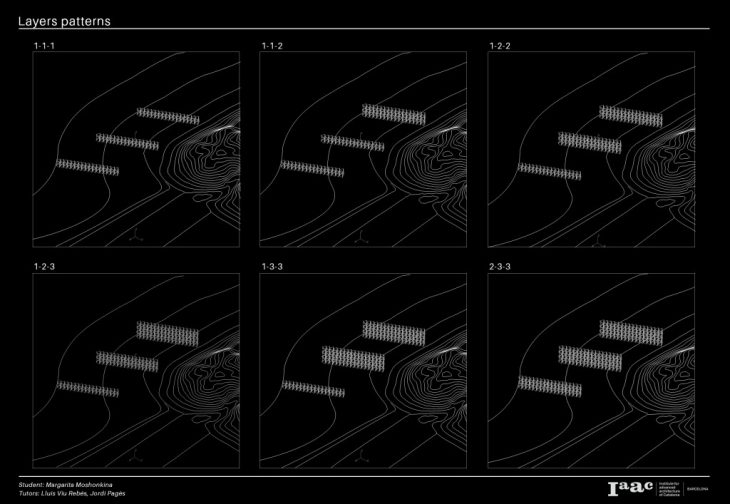
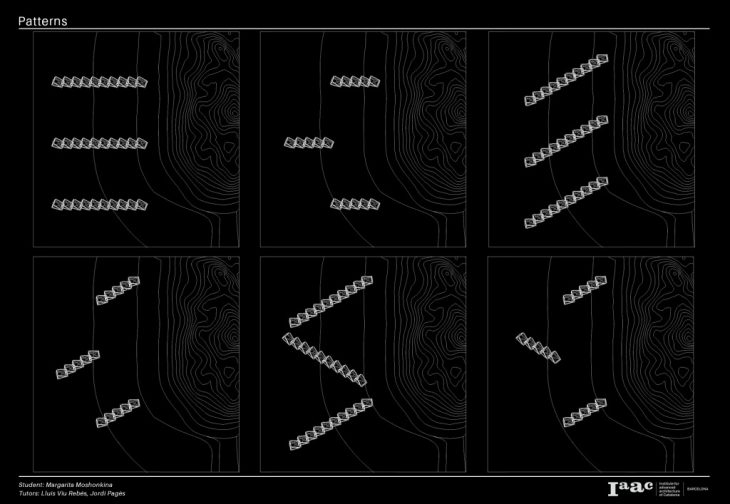
And later on after CFD analysis was chosen the most optimal result, which reduce the wind speed by 60 percent.

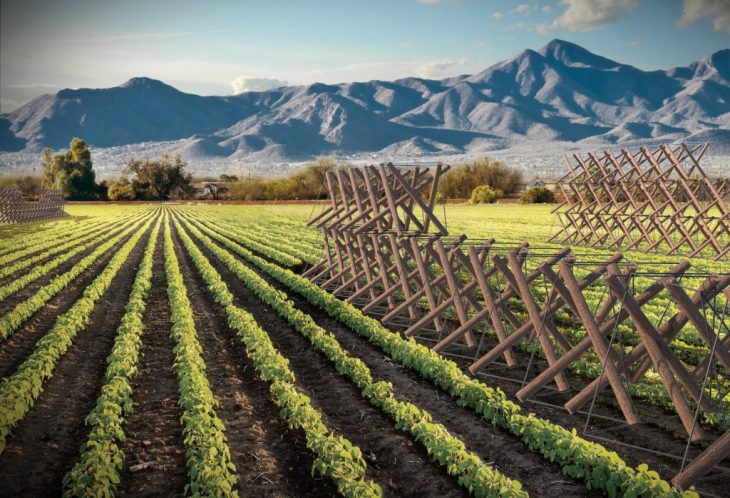
The aim is not only solving the problem but taking advantage of it.
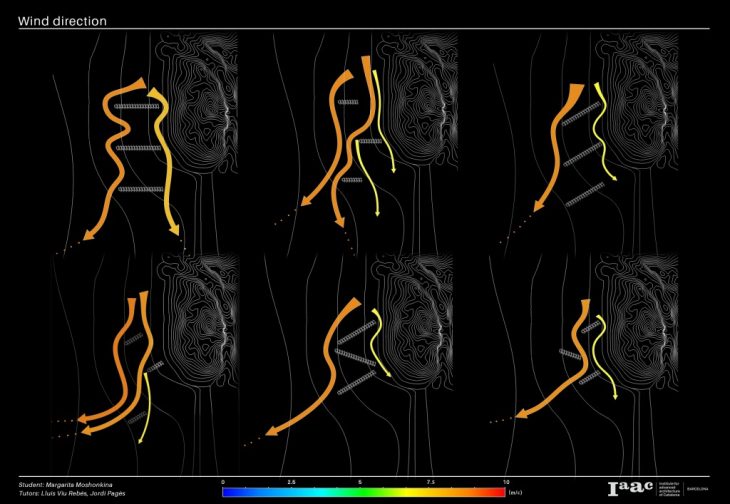
The windbreak tensegrity structure could not only reduce the wind speed but also direct the wind. Hence guide the wind to wind power station for power generation.
